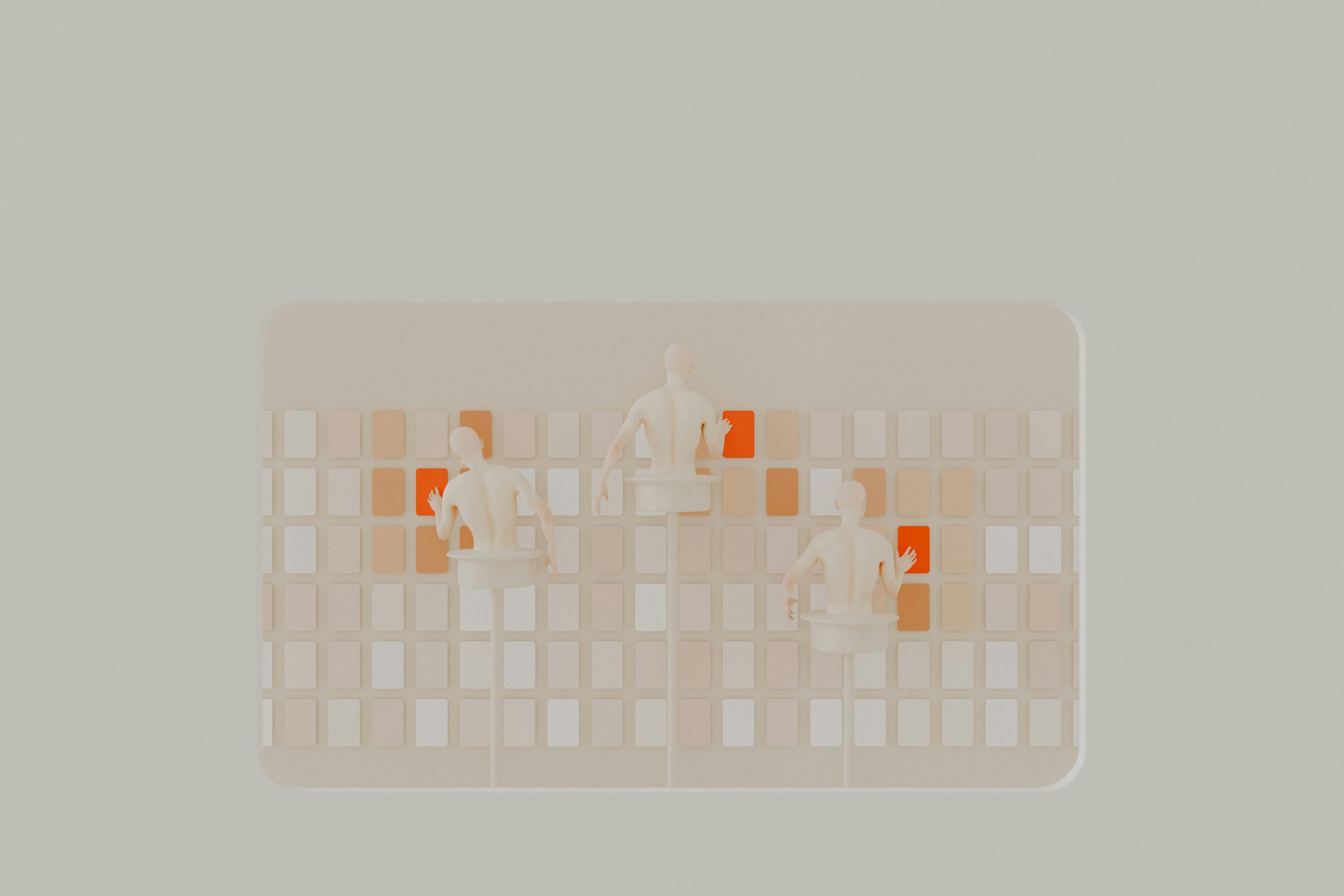Generative artificial intelligence (Generative AI, Gen AI) has revolutionized the way we create and interact with the digital world. From generating realistic images and videos to producing creative text formats, generative AI models have opened up a world of possibilities. However, despite their impressive capabilities, generative AI models are not without their flaws. One of the most concerning issues is the phenomenon of AI hallucinations.
In the realm of artificial intelligence, the concept of „generative AI hallucinations” has emerged as a captivating phenomenon, blurring the lines between reality and fiction. As we delve deeper into the intricacies of this occurrence, we unravel a world where AI systems can conjure up information that defies the boundaries of their training data, leading to both fascinating possibilities and potential pitfalls.
In this article, we will explore what generative AI hallucinations are, how they arise, why they occur, their consequences, and when they might be beneficial. We will also provide examples and discuss best practices to mitigate their occurrence, alongside a glimpse into the future of generative AI.
What are generative AI hallucinations?
AI hallucinations arise from the inherent nature of generative models, which are designed to create new content based on patterns and relationships learned from their training data. However, these models can sometimes extrapolate beyond their training data, leading to the generation of novel information that may not be entirely accurate or grounded in reality.
Generative AI hallucinations refer to the instances where AI models generate outputs that are not grounded in their training data or factual information. These hallucinations can manifest in various forms, such as fabricated text, images, or even audio and video content. In essence, the AI system creates information that does not exist in its knowledge base, resulting in outputs that may seem plausible but are ultimately fictitious.
How do AI hallucinations arise?
AI hallucinations typically result from the inherent limitations and biases in the training data, as well as the design of the AI models. Generative AI systems, such as language models (e.g. large language models) and image generators, are trained on vast datasets that include a mix of accurate and inaccurate information. During the training process, these systems learn patterns and correlations from the data, but they do not understand the underlying truth. Consequently, when generating new content, they may produce outputs that reflect the inaccuracies and biases present in their training data.
Moreover, AI models can also hallucinate when they are pushed beyond their knowledge boundaries. For instance, when a model is asked to generate information about a topic it has limited exposure to, it may fabricate plausible-sounding content to fill the gaps in its knowledge.
Why do AI hallucinations occur?
Artificial intelligence generating output that is factually incorrect or misleading can happen for a variety of reasons. Several factors contribute to the occurrence of AI hallucinations:
- insufficient training data: if an AI model is not trained on enough data, it may not have the necessary information to generate accurate outputs
- incorrect assumptions: AI models are trained on patterns in data, and if these patterns are incorrect, the model may make incorrect assumptions about the world
- biases in the data: if the data used to train an AI model is biased, the model may reflect those biases in its outputs
- model complexity: complex models with numerous parameters can overfit to the training data, capturing noise and spurious correlations that lead to hallucinations
- prompt engineering: the way inputs are structured and presented to the AI can influence the likelihood of hallucinations. Ambiguous or leading prompts can cause the AI to generate incorrect information
- generalization issues: AI models may struggle to generalize from the training data to real-world scenarios, especially when encountering novel or unexpected inputs
Examples of generative AI hallucinations
AI hallucinations can manifest in various forms, ranging from innocuous to potentially harmful. Generative AI models can create by combining elements from training data in unexpected ways.
Here are a few examples of generative AI hallucinations:
- fabricated references: AI language models might generate fictitious references or citations that do not exist, misleading users into believing they are genuine sources
- imaginary images: image generation models can produce realistic-looking images of places, objects, or people that do not exist in reality
- false data: AI systems tasked with generating statistical data or reports might produce figures that are entirely made up, affecting data-driven decision-making processes
- incorrect language translations: an AI model asked to translate text from one language to another may produce a translation that makes no sense or is grammatically incorrect
For instance, an AI language model might generate a plausible-sounding but entirely fabricated quote attributed to a historical figure. Another example– an AI model that is asked to generate images of cats may produce images of cats with unrealistic features, such as six legs or two heads. And one more example – an AI model that is asked to write a news article may generate an article that is factually inaccurate or even fabricated.
Why might generative artificial intelligence hallucinations be a problem?
While AI hallucinations can be fascinating from a creative standpoint, they also pose significant challenges and risks. Inaccurate or misleading information generated by AI systems can have far-reaching consequences, particularly in domains where factual accuracy is paramount, such as healthcare, finance, or legal applications. Unchecked AI hallucinations can erode trust in AI systems and undermine their credibility.
Generative AI hallucinations can be a problem for a number of reasons:
- they can mislead users: If users are not aware of the potential for AI hallucinations, they may be misled by the false or misleading information that these models produce
- they can damage reputations: If an AI model is used to generate false or misleading information about a person or organization, it can damage their reputation
- they can be used for malicious purposes: AI hallucinations could be used to create fake news, propaganda, or other forms of misinformation
Consequences of AI hallucinations
AI hallucinations pose several challenges and risks:
- misinformation: inaccurate outputs can spread misinformation, leading to misunderstandings and incorrect decisions
- loss of trust: repeated instances of AI hallucinations can erode user trust in AI systems, hindering their adoption and effectiveness
- legal and ethical implications: generating false information can have legal and ethical consequences, particularly in sensitive areas such as healthcare, finance, and law
- operational risks: In critical applications, such as autonomous vehicles or medical diagnostics, AI hallucinations can lead to operational failures and safety hazards
When can generative AI hallucinations be helpful?
Paradoxically, AI hallucinations can also be a boon in certain creative domains. In the realms of art, design, and entertainment, these hallucinations can spark new ideas, foster imaginative explorations, and push the boundaries of creativity. Generative AI models can be leveraged to visualize and interpret data in novel ways, enhancing our understanding and appreciation of complex information.
For example, artificial intelligence hallucinations can be used to:
- art and design: AI-generated hallucinations can inspire new artistic styles and designs, pushing the boundaries of creativity
- data visualization and interpretation: in data science, hallucinations can help visualize and interpret complex datasets in novel ways, offering fresh perspectives
- gaming and virtual reality (VR): in gaming and VR, hallucinations can create immersive and imaginative environments that enhance the user experience
How to prevent generative AI hallucinations – best practices
To mitigate the risks associated with AI hallucinations, researchers and developers are exploring various strategies. These include improving the quality and diversity of training data, implementing robust fact-checking mechanisms, and developing techniques to detect and filter out hallucinated content. Additionally, transparent communication about the limitations and potential biases of AI systems is crucial to managing expectations and fostering responsible use.
There are a number of things that can be done to prevent generative AI hallucinations:
- data curation: ensure high-quality, diverse, and representative training data to minimize biases and inaccuracies
- model validation: regularly validate and test AI models against real-world scenarios to identify and correct hallucinations
- multiple models: using multiple AI models can help to identify and correct hallucinations
- human evaluation: incorporate user feedback mechanisms to detect and rectify hallucinations in real-time
- explainability: develop explainable AI systems that provide insights into how outputs are generated, helping users discern between accurate and hallucinated information
- continuous monitoring: implement continuous monitoring and updating of AI models to adapt to new data and reduce the likelihood of hallucinations
The future of generative AI
Generative AI is a powerful tool with the potential to revolutionize many aspects of our lives. However, it is important to be aware of the potential for AI hallucinations and to take steps to mitigate them.
"As generative AI technology continues to develop, we can expect to see new and innovative ways to prevent and detect hallucinations, making these models even more reliable and useful"
– comments the Sembot specialist.
Ongoing research focuses on improving data quality, developing robust training methodologies, and creating more transparent and explainable models. As AI systems become more sophisticated, the balance between creativity and accuracy will be crucial in harnessing the full potential of generative AI while minimizing the risks associated with hallucinations.
It is also possible that as generative AI evolves, the phenomenon of hallucinations will persist, creating both challenges and opportunities. Striking the right balance between harnessing the creative potential of AI hallucinations and ensuring the integrity of factual information will be a critical endeavor. Ultimately, the future of generative artificial intelligence lies in humans’ ability to harness the power of these technologies while maintaining a good connection with reality.
Generative AI hallucinations present both challenges and opportunities. Understanding their origins, implications, and mitigation strategies is essential for leveraging the benefits of generative AI while safeguarding against its pitfalls. By adhering to best practices and fostering continuous innovation, we can enhance the reliability and trustworthiness of AI systems, paving the way for a future where generative AI can be used safely and effectively across various domains.





